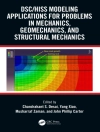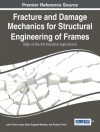This book discusses modern approaches and challenges of computer-aided design (CAD) of quantum circuits with a view to providing compact representations of quantum functionality. Focusing on the issue of quantum functionality, it presents Quantum Multiple-Valued Decision Diagrams (QMDDs – a means of compactly and efficiently representing and manipulating quantum logic. For future quantum computers, going well beyond the size of present-day prototypes, the manual design of quantum circuits that realize a given (quantum) functionality on these devices is no longer an option. In order to keep up with the technological advances, methods need to be provided which, similar to the design and synthesis of conventional circuits, automatically generate a circuit description of the desired functionality. To this end, an efficient representation of the desired quantum functionality is of the essence. While straightforward representations are restricted due to their (exponentially) large matrixdescriptions and other decision diagram-like structures for quantum logic suffer from not comprehensively supporting typical characteristics, QMDDs employ a decomposition scheme that more naturally models quantum systems. As a result, QMDDs explicitly support quantum-mechanical effects like phase shifts and are able to take more advantage of corresponding redundancies, thereby allowing a very compact representation of relevant quantum functionality composed of dozens of qubits. This provides the basis for the development of sophisticated design methods as shown for quantum circuit synthesis and verification.
Зміст
Part I Introduction and Background.- 1 Introduction.- 2 Background.- Part II Representation of Quantum Functionality.- 3 Challenges and Initial Approaches.- 4 Quantum Multiple-Valued Decision Diagrams.- 5 Discussion and Outlook.- Part III Design of Quantum Logic.- 6 Challenges and Initial Approaches.- 7 Synthesis of Quantum Circuits.- 8 Correctness of Multiple-Valued Implementations.- 9 Discussion and Outlook.
Про автора
Philipp Niemann received a diploma degree in Mathematics and a Dr. rer. nat. degree in Computer Science from the University of Bremen, Germany, in 2012 and 2016, respectively. There, he worked in the Group for Computer Architecture under the supervision of Prof. Dr. Rolf Drechsler and Prof. Dr. Robert Wille. Recently, he joined the Cyber-Physical Systems (CPS) department at the German Research Center for Artificial Intelligence (DFKI). His research interests include the design of reversible and quantum circuits with a focus on decision diagrams as well as in the verification of formal models.
Robert Wille is a full professor at the Johannes Kepler University Linz, Austria. He received diploma and Dr.-Ing. degrees in Computer Science from the University of Bremen, Germany, in 2006 and 2009, respectively. He worked with the Group for Computer Architecture at the University of Bremen and with the German Research Center for Artificial Intelligence (DFKI). Additionally, he worked as a lecturer at the University of Applied Science in Bremen, and as a visiting professor at the University of Potsdam and the Technical University Dresden, both in Germany. His research interests include the design of circuits and systems for both conventional and emerging technologies with a focus on the domain of synthesis and verification.












